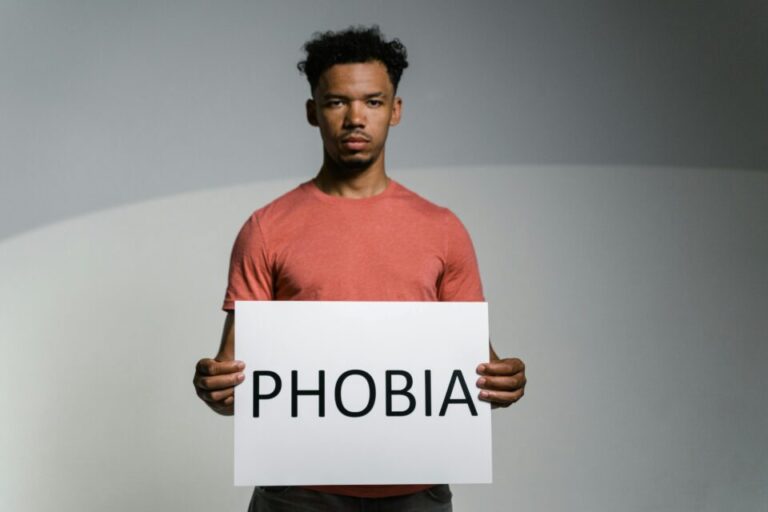Phobias are not entirely new to a lot of people, as various people have different fears. However, some anxieties are categorized as specialized phobias, such as placophobia.
Placophobia is one such specialized phobia that we’d like to bring to your attention. This phobia is an unreasonable fear of tombstones and graves. Many people suffer from this phobia, despite how odd it may seem.
Those who suffer from placophobia will avoid funerals, tombstones and anything related to burial ceremonies. Some may experience severe anxiety attacks simply thinking about tombstones, let alone viewing them.
Yes, when thinking about or seeing tombstones, a person with placophobia may experience full-blown panic episodes.
Although not in all situations, some of them are unable to cope with the concept and would most likely experience panic attacks when confronted with their dread.
Rapid heartbeats, elevated heart rates, increased breathing rates, racing pulses, high blood pressure, strained muscle tensions and heavy sweating are some of the most common signs of placophobia-induced panic episodes.
Placophobia, like other phobias, causes people to go to extreme lengths to avoid their concerns. So, they often make great efforts to avoid contact with tombs or cemeteries, no matter who dies.
Such people may even avoid cemeteries, even when they are not forced to enter. If they have to go by a cemetery, they prefer to avoid it, even if it means taking a longer route.
Placophobia is characterized by excessive concern and unreasonable thinking. People with this illness frequently assume that avoidance would help them cope better and lower their chances of experiencing panic or anxiety episodes.
However, in the long run, they worsen their illness by intensifying the symptoms of placophobia that patients encounter.
Causes of Placophobia
Placophobia, like other phobias, has no recognized cause. However, research suggests that placophobia may be caused by a mix of genetic and environmental factors. Every human is composed of genetic components. Genes define and distinguish us as people.
However, some of our DNA is inherited from our parents. As a result, it is quite feasible for us to acquire some of our characteristics, including some of our phobias, from our parents.
According to research, the majority of people who present with specific phobias, such as placophobia, have parents who have battled with one or more mental disorders. As a result, it is safe to assume that if a person’s parent or family member suffers from an anxiety illness, they are more likely to develop placophobia.
Also, it is important to remember that, while you are more likely to have a phobia, you may develop a different phobia than your parent or close relative did.
So, here are some of the causes of placophobia:
Environmental Factors
Most people who have a genetic tendency to develop placophobia do not exhibit that trait if there are no triggers present.
In general, before a genetic marker manifests, there must be an appropriate trigger to activate that gene. Placophobia occurs when a person who already possesses that gene experiences a traumatic event that is strong enough to cause the expression of that gene.
Several factors can cause the expression of a particular gene. They include;
- The patient’s upbringing
Patients raised by a family that has strong feelings about tombstones may develop placophobia.
In other words, if your parents or guardians have an unreasonable dread of tombstones, which causes them to feel insecure and in danger every time they view a grave, they can easily pass on this fear to their children.
In the long run, the youngster develops placophobia, which becomes more pronounced as he or she grows.
- Past Experiences
A common saying is that the mind never forgets an event that occurs. A person may develop placophobia as a result of a previous traumatic experience or a one-time occurrence that occurred and was communicated to the patient.
Symptoms of Placophobia
As with almost all phobias, a person with placophobia would most likely exhibit symptoms of anxiety and panic attacks, particularly when they are near their triggers.
It is crucial to understand that not everyone will experience panic episodes. Also, depending on the severity of the panic attack, some individuals may require hospitalization before feeling better.
However, several circumstances will influence whether the patient needs medical attention. Avoidance is one of the most obvious indicators that someone has developed placophobia.
When a person has a phobia (such as placophobia), they usually try to avoid their fears. Typically, this means that they will avoid any interaction with their worries.
Placophobia patients may have two types of symptoms: physical and psychological.
-
Physical Symptoms
Most people with placophobia experience panic attacks, which can be extremely distressing and terrifying. Sometimes these symptoms appear unexpectedly.
Typically, the patient does not need to be near the trigger to experience a panic attack; the mere thought of tombstones and gravesides is enough to elicit a response from them.
Some people believe that panic attacks don’t exist; unfortunately, they do.
Panic attacks can cause bodily responses, including
- intense perspiration
- Tremors and trembling
- Some individuals may experience cold or hot flushes sequentially
Symptoms may include:
difficulty breathing, tightness of breath, sensations; of being suffocated, tachycardia (rapid heartbeats), racing pulse rates, chest ache and tightness, butterfly sensations and nausea.
Other symptoms may include nausea, dizziness, severe headaches, fainting, pins and needles, numbness, and a dry mouth.
Also, frequent restroom trips, ringing in the ears, and difficulty thinking clearly.
-
Psychological Symptoms
Aside from the regular physical symptoms, some patients may experience psychological issues. Symptoms may include fear of losing control, fear of death, feelings of dread, and fear of the unknown.
Symptoms may include fear of fainting, remorse, self-blame and embarrassment, as well as difficulty concentrating. Also, irritability, mood changes and anger.
Treatment for Placophobia
Many people who suffer from placophobia believe they do not need treatment. This is because they believe they are safe once they have avoided their fear.
However, they are unaware that avoidance is merely a temporary solution to their uneasiness. Avoidance may appear to give you control over a situation at times but there are occasions when avoidance is insufficient or no longer viable. As a result, you should seek expert help whenever possible.
Seeking professional help is not a sign of weakness, as some may believe. Managing your emotions more effectively is a sign of strength and courage.
It simply implies you are ready to learn why you feel, behave, and act the way you do. Although most phobias, including placophobia, are curable, there are no predetermined treatment plans for all phobias that you can follow.
In other words, the therapy for placophobia is heavily influenced by both the individual and the severity of the disorder.
Most treatments are used in combination. However, it is critical to remember that no treatment option should be attempted on your own without the supervision of a medical practitioner. Before beginning any of the treatment programs listed below, endeavor to check with your doctor.
Various therapy strategies for phobias exist; however, psychiatrists typically use three approaches, particularly when treating placophobia. They include:
-
Talking Treatments
Talking treatment, also known as talking therapy or counseling, is a one-on-one conversation with an experienced and qualified expert about how you think, respond and behave in response to your triggers.
- Therapies are frequently categorized as relaxed therapies that are physically non-intrusive. There are various sorts of counseling sessions and talking treatments, but they all seek to accomplish the following:
improves self-awareness and comprehension. • identifies and addresses negative patterns in actions, ideas, and behaviors. - It can assist in identifying and resolving uncomplicated feelings, as well as finding techniques to cope with those that cannot be resolved.
- It is best to provide a safe space and time to speak with someone you know who can assist you and will not condemn you.
Talking therapy examples include:
Cognitive Behavioral Therapy (CBT): CBT posits that our behaviors are influenced by what we see and perceive. Anxiety, anguish, and terror can alter our perceptions of reality, leading to a distorted image.
Platophobia causes individuals to experience more worry because their perception of reality is not accurate.
Exposure Therapy: Exposure therapy is frequently used following cognitive behavioral therapy. It is frequently predicated on the belief that whatever a person is consistently exposed to will not hurt the patient in the long term.
People with placophobia typically believe that tombstones might harm or react to them, and they avoid such sites.
-
The Use of Medication
In general, drugs are not suggested as the first step in treating phobias. It should be noted that medicines do not treat phobias; rather, they address the symptoms of phobias, such as melancholy and/or anxiety.
Therapies are frequently required to assist a patient in overcoming placophobia. However, if the therapist detects certain adverse effects, such as depression or anxiety, he or she may prescribe the following:
- Beta-blockers
- Antidepressants.
- Tranquilizers.
It is critical to remember that these drugs should never be used unless a therapist prescribes them. Otherwise, they might lead to dependence and addiction if used without supervision.
Conclusion
There you have it. Here is what the term placobhobia is all about. This phobia can be managed for as long as necessary until the sufferer gets therapy and deals with the fear.


